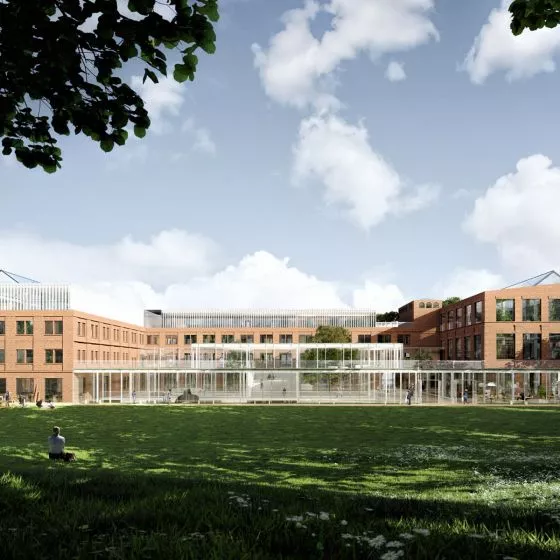A{tag:studenci} from the Cracow University of Technology decided to take on the difficult topic of revitalizing the historic D-10 facility in Trzciany, which is part of the Modlin Fortress. In the area where the ruins of the fortification are now located, the student proposed the introduction of concrete buildings to serve the functions of exhibition and traffic service on the Tourist Route of Fighting Poland.
history of the fortress
The Modlin Fortress was created between two rivers - the Vistula and the Narew. It includes a citadel, a forebridge and two rings of forts - an outer and an inner ring. Between 1832 and 1864, barracks of 2250 meters were built there, and later the fortress began to be encircled by forts. The first ring consisted of forts numbered I through VIII. The second ring was formed by ten forts, which were built between 1912 and 1914, and were numbered IX through XVIII. Intermediate facilities were given the markings D-1 through D-10. D-10 (or Fort XVIIa) was built as an intermediate work of the Modlin Fortress and is a little-known element of it. Its construction completed the Janówek Fort Group and Fort XVIII between the field. As a smaller fort, it was built in the Kadzielnia charming area. During the withdrawal of Russian troops in 1915, important elements of this fortification were blown up.
Concrete objects refer to the scattered ruins of the barracks
© Marta Mojsik
revitalization of the ruins
Marta Mojsik's main idea was to create a space that does not overwhelm the ruins of the D-10 Work, but interacts with them. The materials and forms used by the student refer to the historic buildings of the area. The project, created under the direction of Dr. Filip Suchoń, is divided into two parts. The main building is located opposite the ruins. It was dug into the existing embankment and lowered in the terrain, so it does not obscure the existing
buildings. The form of the building is a reflection of the historic shape of Works D-10. The cornice refers to the cornice existing in the original form of the barracks. The new building functions as a traffic service for the Polish Fighting Poland Tourist Route. Inside there is a conference room, a rest area with a store, and a cafeteria with sanitary, and kitchen facilities. Between the main building and the fortifications is a square filled with concrete exhibition pavilions. Their arrangement and formation relate to the ruins present there.
The layout and appearance of the buildings is irregular, as is the shape of Works D-10
© Marta Mojsik
The layout and appearance of the buildings is irregular, just like the body of Works D-10, which was blown up in 1915. Inside the pavilions there are exhibitions on both the former barracks and the history of Jablonna municipality and the village of Trzciany. The exhibits also deal with the flora and fauna of the Vistula and Narew areas. Marta Mojsik's project aims to revitalize this historic area and highlight its importance in the Jablonna municipality.
The main facade elements are concrete and corten steel
© Marta Mojsik
The building, dug into the embankment, takes the shape of the historic fortifications and is placed opposite them. With its glazed facade, it is a mirror reflection of the concrete ruins. The main facade material is concrete, while other elements were made of corten steel. The canopy on the main facade refers to the original form of the cornice in Work D-10. The exhibition forms refer to the explosion of the historic barracks and the scattering of their elements into individual blocks.
Also read about the projects: The Peace Pavilion in Senegal and the Abu Dhabi desert lodging houses, which Marta Mojsik co-authored.











































